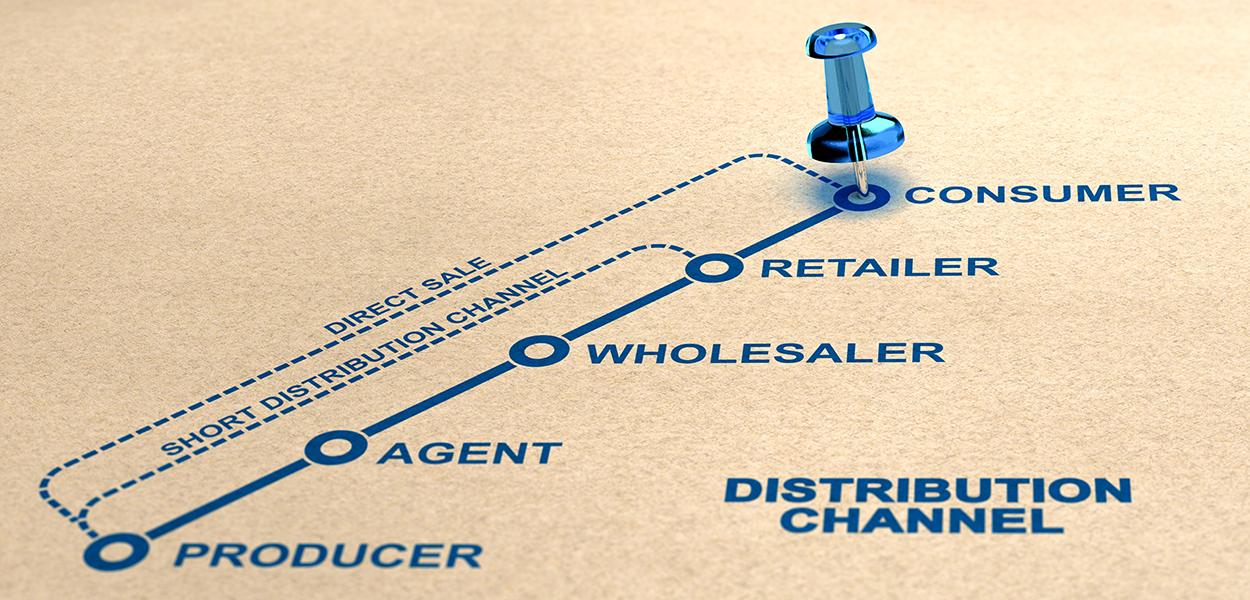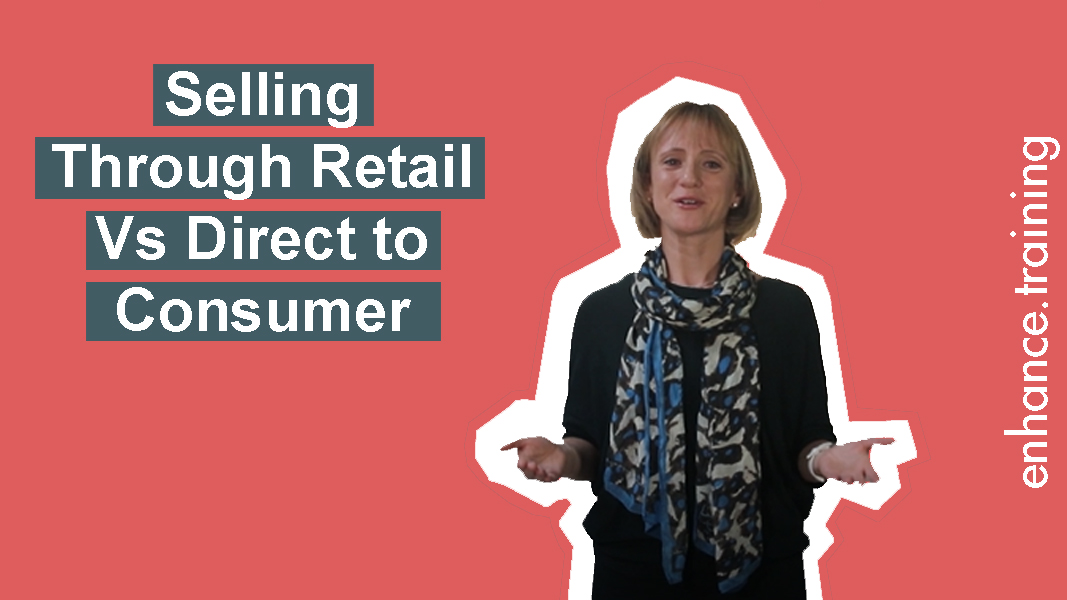What is the best way to get your product to more customers? Is it retail or is the direct-to-consumer method now the best route? Of course, you do not just have to choose one or the other, you can choose both. But do you need to?
Last week I saw the following statment in an article on this topic:
“With the current situation and online shopping increasing, direct to consumer is all you need.”
So, is it right? Do we need retail? Or should we only focus on direct to consumer selling? In this article I look at both sides of this question and try and help you uncover the right distribution strategy for your product.
Direct to Consumer is all you need:
Let’s first look at the advantages of the direct to consumer (D2C) channel. We’ll look at general advantages and advantages based on the current environment.
Watch on YouTube
1. D2C: Your relationship is with the consumer.
As you work directly with the consumer rather than going through at least one ‘middleman’ the D2C channel means that your relationship is with the consumer. Therefore, you get to control the messaging to that consumer. You do not have to rely upon a retailer presenting your brand in the right way, you are doing it yourself. You can control your product and your brand.
This relationship also means that you get more access to feedback from the customer. You will get to hear the good, the bad and the ugly but you can learn quicker what is working, what is not. What the consumer values and what they don’t. You can adapt your product more quickly and efficiently.
2. D2C: You have full control of pricing.
It is not just communication you have control over but pricing too. Pricing rules set by the Competition & Markets Authority mean that you can only control the price to the person you sell to. If you sell directly to a consumer, you choose the price. If you sell to a retailer, you choose the price to them, but they choose the price they sell it to others.
3. D2C: More profit per product.
On an individual product level at least, the D2C channel should give you more profit for item. This is because you do not need to share your margin with a retailer or anyone else. The consumer pays the price to you, you take away your costs and the rest belongs to you. However, you may have more costs for shipping, administration etc so it will not always be the cheapest. You will have to weigh up the costs and see which is economically best for you.
It is not just the method itself as the market conditions look to be favourable too.
4. More consumers online than ever before
According to the ONS, in November 2020, 36% of all retail sales were online. This was up from 21.6% in November 2019 and 21.6% in 2018 too. Clearly the corona virus and lockdowns have had an impact, but the fact still is that more people have been shopping online than ever before.
Now that people have got used to this way of shopping, some at least will continue to do so. How many, no-one knows but most commentators believe it is here to stay and grow. This plays into the hands of online D2C companies as it means that geography is not a boundary and they can continue to expand their brand to more people who are now online.
5. More people trying new ways of shopping.
In 9 out of 13 major counties surveyed by McKinsey at least 2/3 of consumers said they tried new kinds of shopping in 2020 and in all 13 countries 65% of consumers say they continue to do so. Whether this is due to more time online, more new launches or shortage of mass retail availability, but people have had to look at other options. For example, when supermarket delivery slots became fully booked, alternatives had to be found. New online retailers such as Bother have stepped in to try to fill the gap but so have D2C ones, especially subscription services. And we are trying signing up to them in our 1000s. Now that consumers are more used to D2C companies, now is the time to focus and take advantage of it.
6. More companies using DTC.
Where most businesses once relied on a middleman to reach their desired demographic, there’s now a huge gap where the distributor or retailers once were. This has led to a growth in D2C companies and it is not just from small or new businesses. In fact, PepsiCo have launched direct to consumer sites, and I know that Unilever have done likewise. For example, you can now buy cleaning bundles directly from them rather than from retailers. This business is likely to be small for them for now but significantly more profitable per item.
Retail matters:
However, I am now going to tell you why retail still matters and why it is not worth abandoning it completely. It still has advantages and there are current studies that suggest that even in these times of crisis we should not abandon retail forever.
1. Retail: Reach more customers.
Whether we are talking about online retail or physical retail, the facts remain. You have a greater chance of reaching more consumers with retail. It will remain to be a key way to drive awareness of your brand, especially if you are starting out.
There are several types of retailers, from the big grocers with physical stores and online presence to online stores only. Many of these online retailers support challenger brands. Simply because they do not have the limits of shelf space and have a belief in supporting more consumer choice. Over the last year more people have turned to these online retailers and now the demand is with them, it will stay.
It would be foolish to ignore the power of retail completely. Reaching more customers and selling more product will allow you to grow your business and to achieve those economies of scale quicker.
Need help with pricing?
Get high value learning for only £1
2. Retail: More efficient use of time and skillset
Your expertise is likely to be in your product. It is less likely to be in logistics, in consumer shopping experience, etc. Retailers have ability that you do not. Therefore, using retailers can save time and effort overall. Why struggle with the extra time and cost it takes when you can partner with someone else to do it for you?
Focus on your strengths, what you are good at and outsource the rest where you can. You will have less stress and it will allow you to develop your products and your brand further.
3. D2C not as easy as it appears.
Huge internet followings rarely, if ever, happen overnight. It takes time and effort to build a large enough level of awareness. Those that succeed have spent untold hours in PR and advertising. Retailers can help you get there faster.
In fact, when surveyed, only 60% of consumer goods companies say they are even moderately prepared to capture e-commerce- growth opportunities. So, while many are trying, not as many are succeeding with D2C. As one exec in the survey said,
‘when it comes to selling directly to consumers, we don’t really know where to start’.
D2C selling requires specific skills, capabilities, logistics and pricing models. It may be an easy place to start but it is certainly not an easy place to scale. Retail is still a practical choice for scale and should not be ignored.
4. Retail bounce-back.
In business, we absolutely should take advantage of the environment around us. We need to be aware of what is happening so we can adapt and evolve. However, we must balance this and make sure that we don’t make long term decisions on short term situations.
In terms of the future of retail, McKinsey analysts predict 2021 will see ‘revenge shopping’ as pent-up demand is unleashed when restrictions are eased. They predict this as this is exactly the experience of all earlier economic downturns and what is happening in China right now. Chinese consumers are beginning to act and spend largely as they did in precrisis times.
Of course, whether this will be replicated in every country still is to be seen. Whatever, the case, we should keep options open and be prepared.
Summing Up
So, what is the answer? Is retail still relevant? Should it be ignored for direct to consumer selling? Unfortunately, I cannot give the definitive answer. You need to decide what’s important for your product. What is right for one brand, may not be right for you.
It is important to explore all avenues and opportunities and pick the route or routes to market that suit your product, your market, and your growth ambitions. There are advantages and disadvantages to each one, of course.
Retail does still hold significant advantages and if you believe that retail matters to your product look out for our next article when I’ll be writing about what retailers want. You will learn what they want so it will be easier for you to fill that need and sell to them.
What next?
If you are not sure which path to take for your product, our course Product Pricing for Retail helps take the ambiguity away for you. Through a simple, structured process, you will uncover the right distribution channel and the right pricing structure for your product.
It will make it easier to sell your product to more people and still make the profit you need and more. Do not struggle unnecessarily with this and do the right thing for the success of your products.
Pricing Learning Hub
Improve your pricing strategies, tactics and profits, gain confidence and reduce the stress of price setting, price increases and discounting.
Join our Pricing Learning Hub and get exclusive access to a range of tools, articles, podcasts and videos by experts with 15+ years in top FMCGs. Join today for only £1.








